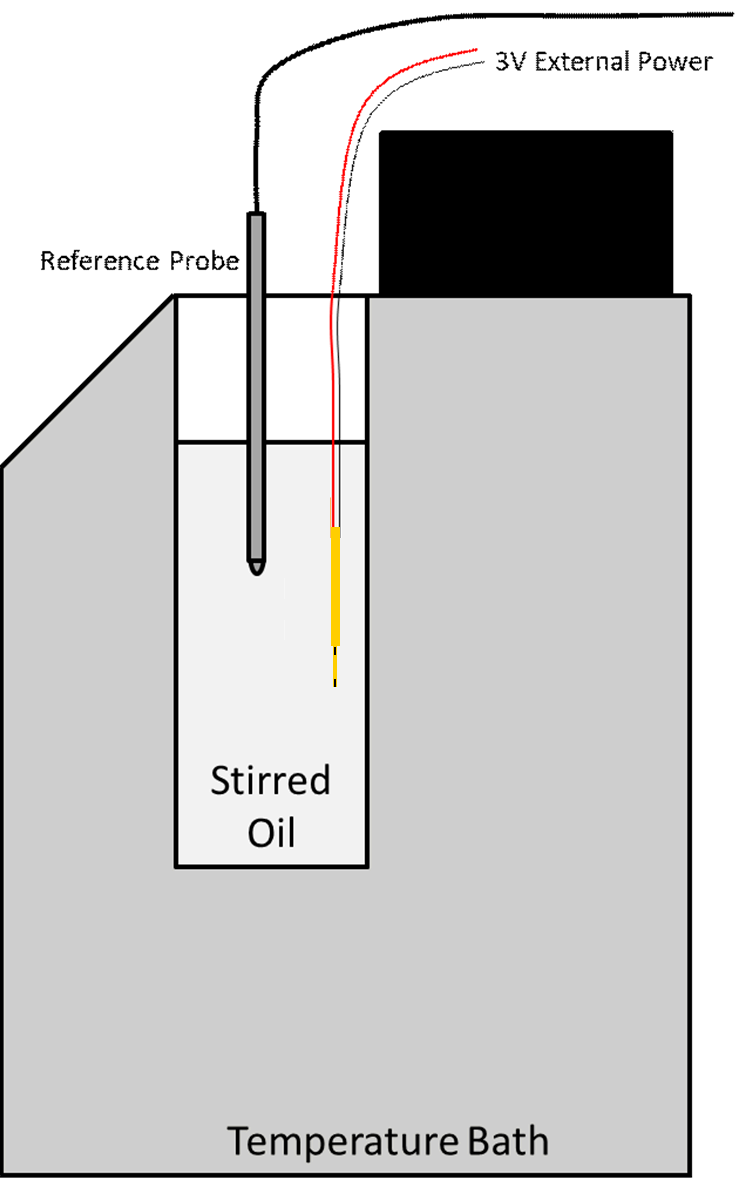TIDUEX1A December 2020 – March 2021
3.3.1.1 System Accuracy
Accuracy of the hearables body temperature monitor flex PCB strip was tested using a stirred oil bath and a calibrated probe. During accuracy testing, one of the flexible strips is submerged in a liquid oil bath and powered through an external 3.3 V supply. The bath is then moved through various points in the human body temperature range, and multiple readings are taken to correlate with the calibrated probe. The accuracy of the TMP117 is specified to be ±0.1 °C within the typically human body temperature range.
 Figure 3-15 Accuracy Test Setup
Figure 3-15 Accuracy Test Setup